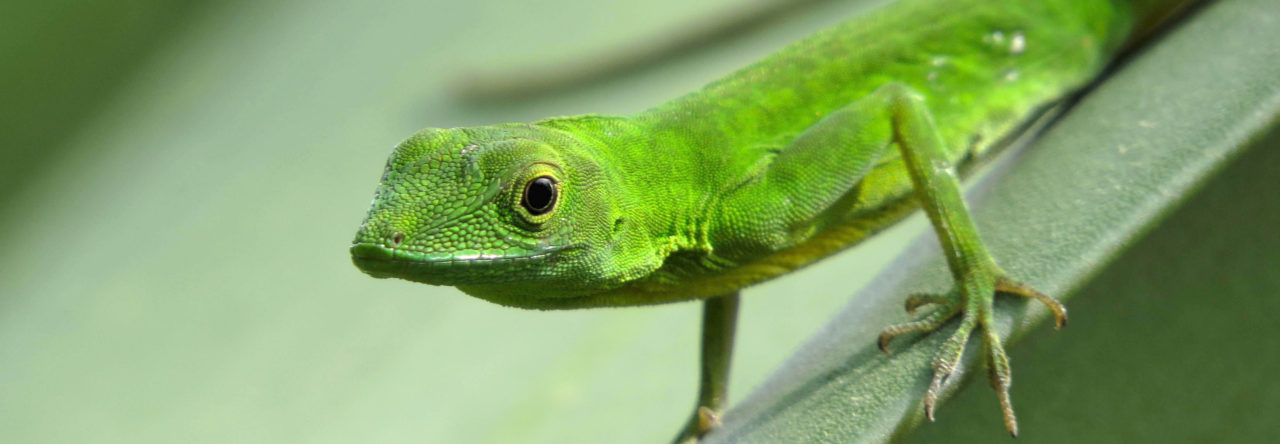
During the Virgin Islands ‘safer at home’ phase, I have found myself engaging more frequently with my non-human housemates – especially the lizards.
Most days I’ll be working at a table on our screened ground-level porch. The screen door is loose along the bottom, which has allowed a small lizard to come inside and share my work space. It is a Crested Anole (Anolis cristatellus), which has a permanent ridge along its back and tail. (Smaller crested anoles with light stripes on their back are either young, or female.)
Anoles are quiet and mostly eat bugs, which I appreciate. (The name rhymes with ravioli.) They are curious, and not scary or threatening. However, this one sometimes shows aggressive behavior if another anole enters its territory – even if it is on the outside of the screen – by doing push-ups and extending the dewlap under its chin.
Anoles are quite plentiful, and a favorite food for the American Kestrels, and Great Egrets living in the neighborhood. Recently I saw a kestrel blast over and snatch an anole up from the ground just outside the porch in a split-second attack. It definitely would have been safer inside the house.

Outside the front door is a small entry deck, where my husband puts a bowl of kibbles for the neighborhood cats. If they don’t finish it, a Ground Lizard (Ameiva exsul) might stop by to grab a bite. This lizard is sometimes called a ‘skink’ in the Virgin Islands, although that name generally refers to a different, rarer species. The ground lizard is larger and beefier than the anoles, with a snake-like body. It moves very quickly, swinging from side to side, more like a ‘slink’.

There is an old teak chair by the door, which for some reason recently attracted a bright, young Green Iguana. They don’t usually come into the house, though there was that time when my son’s girlfriend came to visit and reached into her suitcase to find an iguana sitting in there. Someone must have left the door open.

These iguanas get darker, spiky-backed, and considerably less attractive when they get larger – especially when one decides to take a dip in the pool.

I had another eek! moment recently when I got out the large pasta pot and something dark was crawling around in it. After I jumped, I realized it was not a gross roach, but a Dwarf Gecko (Sphaerodactylus macrolepus), which some people call a ‘wood slave’. They are nocturnal, and I only seen them occasionally, like when I move a picture frame on the wall and one is sleeping behind there and quickly runs off.
I have never been able to get a good look at one, so I grabbed my camera and took a few shots of this one before it crawled up the side of the pot and hopped out.
The photos turned out to have a surprisingly existential quality, I thought, capturing the general feeling of safer-at-home isolation, confinement and vertigo.

Gail Karlsson is an environmental lawyer, writer and photographer – author of The Wild Life in an Island House, plus the guide book Learning About Trees and Plants – A Project of the Unitarian Universalist Fellowship of St. John. See uufstjohn.com/treeproject and gvkarlsson.blogspot.com. Follow her on Instagram @gailkarlsson
- Invasive Agama Decreases Number of Brown Anoles, Maybe Increases Disease Threat to Humans - March 9, 2025
- Green Anole Perches Near Ground to Take Advantage of a Mosquito Trap - February 26, 2025
- Third Mexican Amber Anolis Lizard Discovered - January 14, 2025


Leave a Reply